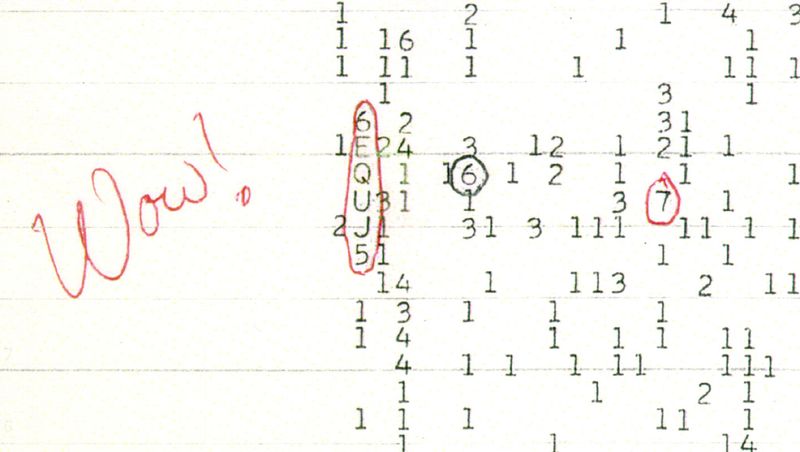An Interest In:
Web News this Week
- April 16, 2024
- April 15, 2024
- April 14, 2024
- April 13, 2024
- April 12, 2024
- April 11, 2024
- April 10, 2024
The Wow! signal may have been a pair of comets

In 1977 radio astronomers at the Big Ear space telescope, searching for signs of extraterrestrial life, came across a signal that wasn't just odd, it was unbelievably strong! The signal, broadcast at at 1420.456 MHz, radiated from the direction of the constellation Sagittarius, and lasted just seventy-two seconds. When researcher Jerry R. Ehman came across the signal he wrote "Wow!" on the print out.
Antonio Paris, a professor of astronomy at Florida's St. Petersburg College, thinks he's figured out the source -- a pair of recently discovered comets!
Everything about the Wow! signal created huge interest. The frequency it was found on correlates strongly with the 'hydrogen line' and was believed to be a most-likely frequency to for Aliens to use when communicating with us. The intensity and sharp build-up/fall off of the signal led researchers to believe it came from a fixed point in the sky. Antonio Paris believes the signal was a sign of two comets, unidentified at the time of the recording, passing in front of the Big Ear.
Via New Scientist:
Comets release a lot of hydrogen as they swing around the sun. This happens because ultraviolet light breaks up their frozen water, creating a cloud of the gas extending millions of kilometres out from the comet itself.If the comets were passing in front of the Big Ear in 1977, they would have generated an apparently short-lived signal, as the telescope (now dismantled) had a fixed field of view. Searching that same area as subsequent radio telescopes did wouldnt show anything. Tracing the comets positions back in time, Paris says that the possible origin for the Wow! signal falls right between where they would have been.
Neither comet was known in 1977; they were both discovered in the last decade, which would mean nobody would have thought to search for them. The odds of any telescope catching them in the region of the Wow! signal by chance were vanishingly small.
To test his idea, Paris proposes looking at the same region of space when the comets are back. Comet 266P/Christensen will transit the region first, on 25 January 2017, then P/2008 Y2 (Gibbs), on 7 January 2018. An analysis of the hydrogen signal of the comets should reveal if he is correct.
Original Link: http://feeds.boingboing.net/~r/boingboing/iBag/~3/s84Fg0RZlCU/the-wow-signal-may-have-been.html


